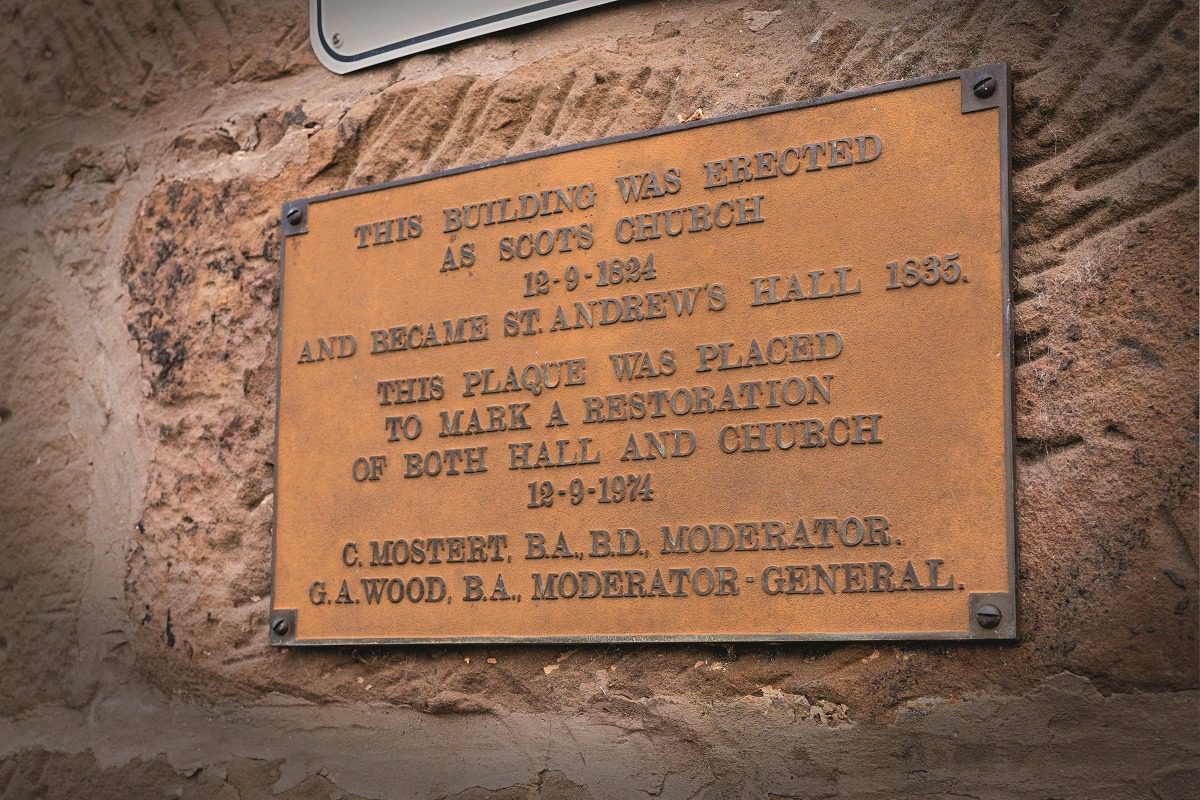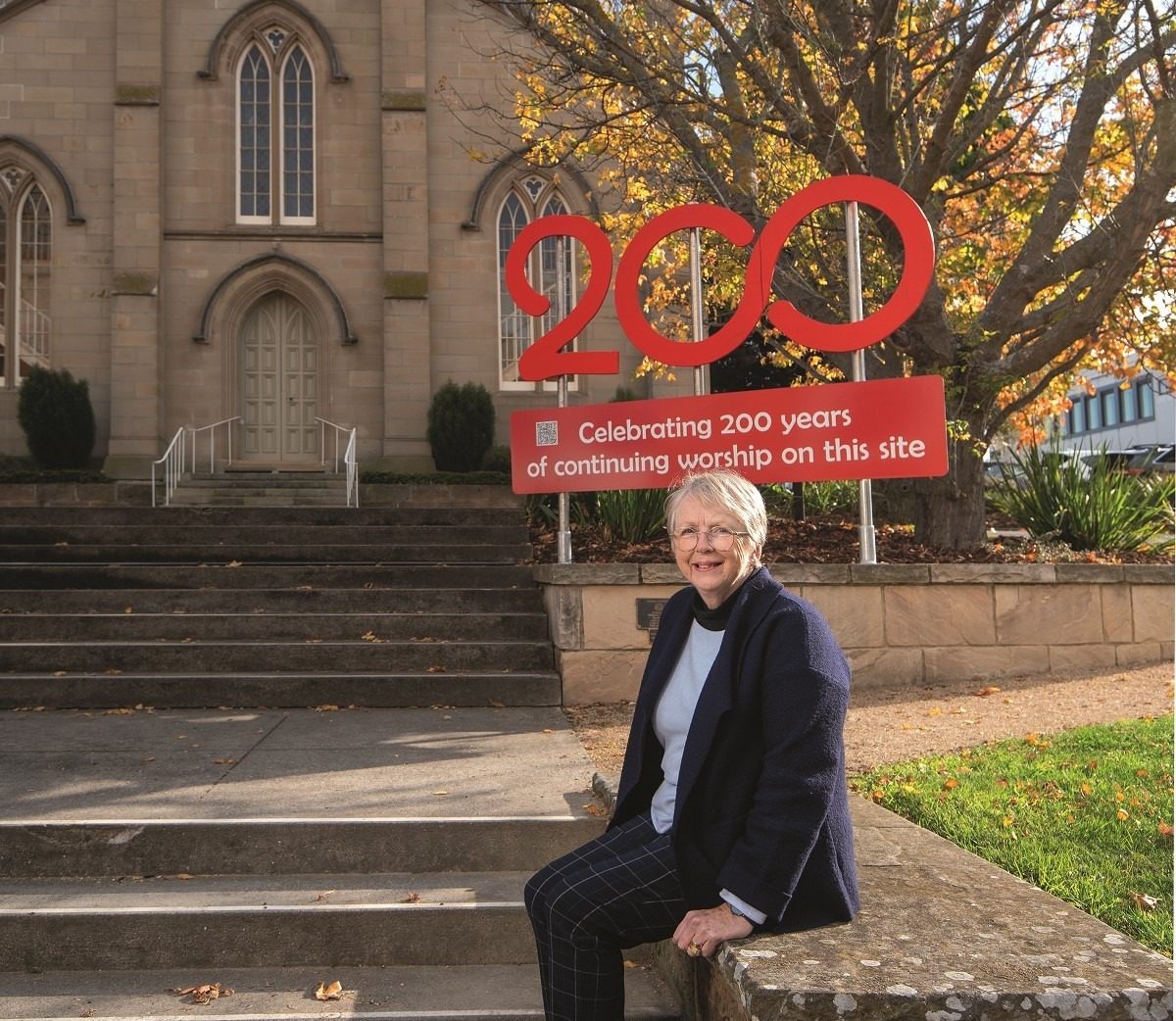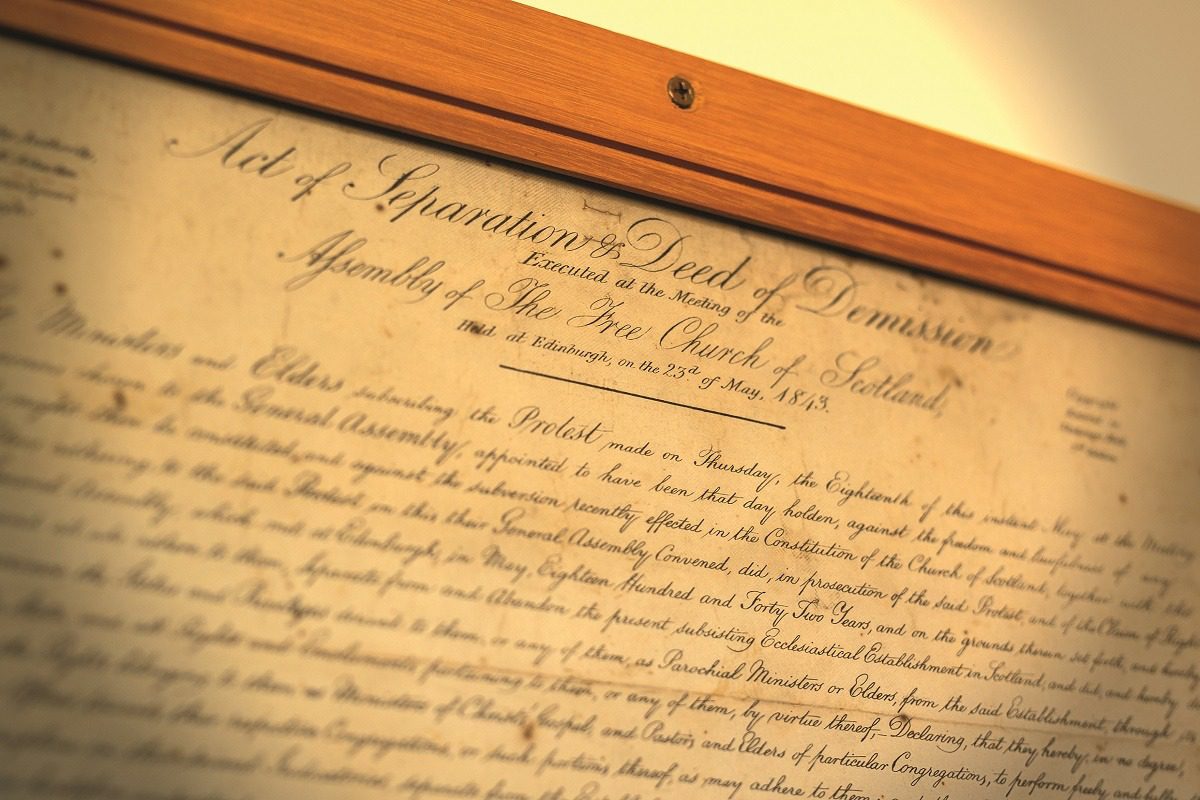By Andrew Humphries
Andrea Wicks and Scots Uniting Church in Hobart go back a long way, all the way to 1952, in fact.
Andrea was baptised at Scots Presbyterian that year, married her husband Paul there in 1975, and for most of her life the historic church in Bathurst Street has been a constant companion on her faith journey.
With such a strong connection, it seems entirely appropriate that Andrea is leading the organising committee responsible for marking the church’s 200th anniversary on September 8.
“It’s a huge thing to be a part of, and I feel very honoured to be involved in organising the anniversary,” she says.
“Sometimes it feels a bit daunting but we, as a team, are working through it.
“I’m a fairly organised sort of person, we are a good team, and it’s all going well.”
Organising such a special occasion has provided Andrea with an opportunity to reflect on the important role Scots has played, not only in her own life but in the lives of family members who came before her.
Andrea’s paternal grandparents, Edward Kay and Eliza Isabel (nee McClymont), were married in what was then St Andrew’s, by the Reverend Dr James Scott in 1902.
Her mum and dad, Joyce and Lindsay Kay, were both heavily involved with the church, and life as part of the Scots community remains one of Andrea’s treasured childhood memories.
“Dad was an elder of the church and mum was part of the Presbyterian Women’s Association, so they were both very involved,” Andrea says.
“Church life was a very big part of my childhood, and I can remember a wonderful camaraderie shared by the people who attended.
“I really enjoyed going to Sunday school there and the church itself offered a special sense of belonging.
“The church always seemed to be quite full during a service and there was always a good number of people worshipping there.”
During her childhood, Andrea remembers some inspiring ministers, including Rev Hector Dunn and Rev G.A. Wood.
“Rev Wood was quite an interesting man and was actually the minister at our wedding in 1975,” Andrea recalls.
“The other minister I remember well was Hector Dunn, who was quite an inspiring presence with a booming voice.”
With preparations now in full swing, Andrea hopes to see as many people as possible at the September anniversary to celebrate Scots’ role in Tasmanian, Presbyterian and Uniting Church history.
“The service on September 8 is going to mark this wonderful journey we have been on for 200 years,” she says.
“We’re inviting people to come along and share it with us and then enjoy morning tea afterwards.”

Scots Church was established on September 12, 1824.
Those attending will also hear the sound of bagpipes, marking the church’s strong original link to Scotland, and paying tribute to those people of faith who, 200 years ago, believed that the Presbyterian church should have a presence in the emerging colony of Tasmania.
“I think if those people were still around today they would be very pleased and proud of the fact that the congregation is still going,” Andrea says.
“They fought hard for the land on which to build a church and for what they were able to achieve.
“That strong determination they showed 200 years ago is still needed today, because churches are closing everywhere and ministers are sometimes difficult to find.
“So the challenges are a little bit different but they are still there today.”
Despite the challenges, Andrea hopes someone else will have the privilege in 2074 of organising a 250th anniversary, as this remarkable piece of Hobart’s history continues to flourish.
“Oh, that would be wonderful, but we need to see some more young people coming through,” she says.
“A lot of people walk by Scots, park their car here or walk through the gardens, without realising what we have here and the many activities associated with our church.
“They accept that it’s here, though, and there is a strength within the fact that it has been such a big part of Hobart’s history.
“There is such a lot of history tying Scots-Memorial to the early years of Tasmania.”
Andrea’s Scots connection of over 70 years continues to sustain her, and she is looking forward to hearing similar stories on September 8 from people about their connection with the church.
“Scots has been such a hugely important part of my life and has been my spiritual home,” Andrea says.
“It’s where I feel safe and the church family is a very special one.
“Scots is a very loving and inclusive community, congregation members are very welcoming and it’s a wonderfully communal church.
“It’s been a wonderfully fulfilling part of my life.”
Those wishing to attend the September 8 service cam email scots.hobart200@gmail.com, while a website on the event is here

“Scots is a very loving and inclusive community, congregation members are very welcoming and it’s a wonderfully communal church,” Andrea says.
Faithful part of Hobart’s history
While the first service was held in 1824, the foundations for worship were laid in 1821 when a group of Scottish settlers, unhappy with having to worship in St David’s Church of England, came together to establish the Presbyterian form of worship in Hobart Town.
Members of the group then wrote to the Associate Presbytery in Edinburgh asking for an ordained minister to be sent to the colony, and also requested a grant of land from Hobart Town’s Lieutenant Governor on which to build a church.
They were granted a block of land in Bathurst Street adjacent to the Prisoners’ Barracks, later known as the Hobart Gaol.
A further grant of land was received to be used as a cemetery.
Answering the call to minister in Hobart Town was the Reverend Archibald Macarthur, a young, intelligent and gifted orator from Edinburgh.
Rev Macarthur arrived in Hobart Town in 1822 as the first Presbyterian minister in Australia, and on January 5, 1823 he conducted the first Presbyterian service in Hobart Town in a room on the corner of Murray and Macquarie streets.
At a meeting in February 1823, a committee of management was established and arrangements were made for the minister’s salary, and to raise funds for a church building.
With funds raised by the public, a small kirk, or church, of freestone was built at the rear of the Bathurst Street allotment.
The kirk was designed by William Hartley Wilson, who was also responsible for the design and construction of Tasmania’s historic Richmond Bridge.
Scots Kirk was built by convict labour in an ashlar style and later a two-storey manse was built on site for the minister and his growing family.
The first service in Scots Kirk was conducted by Rev Macarthur on Sunday, September 12, 1824.
Scots Kirk was used for worship until 1836 and, by this time, a new church (St Andrew’s) had been built, dedicated and opened for regular worship in June 1836.
In 1935, when the congregations of St Andrew’s and Chalmers Church (formerly Free Church of Scotland) amalgamated, St Andrew’s Church became known as Scots Church.
The Kirk became known as St Andrew’s Hall and has been used continually since and is now used for meetings, as the minister’s office and Scots Museum.

Scots has been an important part of Hobart’s history for 200 years.
A caring presence
By Rohan Pryor
Two centuries is a long time in human terms, and spans more than 10,000 Sundays, or one tenth of the life of the Christian church since the first experience of Pentecost.
This long span of time disappears in the face of immediate human needs for food, shelter and safety, connection and care.
A person living on the streets of Hobart or amid a mental health crisis does not care about the past, or even the future – the present moment is where they can experience God’s loving care through another human being, or a companion animal, or a choir of voices.
It is these fleeting moments of eternal love and grace present now which the Church seeks to provide to each one in need, and to the whole of God’s creation.
It is these fleeting moments of divine presence and care which the Scots-Memorial church and its predecessors have offered to the people of Hobart, through outward-focused mission and through the gathered ministry of a community of faith.
Christian worship is not a Sunday-morning club of inward-focused friends, but a recurring reminder of purpose and a renewal of heart for the everyday mission of Christian disciples: sharing good news in actions as well as words; being good news through meeting human need; embodying good news amid the pain and loss of life; incarnating hope, faith and love.
The Presbytery of Tasmania and the Synod of Victoria and Tasmania joins with the Scots-Memorial congregation to celebrate milestones big and small: moments of God’s grace experienced amid the long span of days, centuries, and eternity.
Rohan Pryor is Presbytery Chairperson, Presbytery of Tasmania, and Synod Liaison Minister (Tasmania) with the Synod of Victoria and Tasmania

